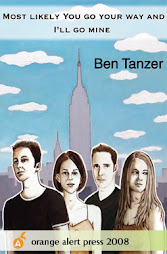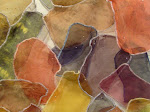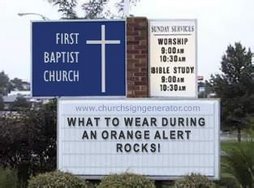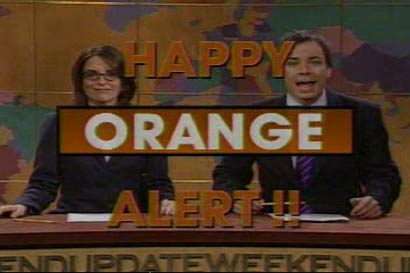
Zach Plague (Dodson)
When setting out to write the goal should be to create something that is unique to you, something that represents all that you enjoy about the written word. The story must be solid and well-written, but the overall presentation must also be an extension of who you are as a writer. Unfortunately, the writer can quickly lose control over cover decisions and layout choices depending on who is publishing their work. The cover of a book gives the reader its first and last look at what the general feel of a book will be, and the layout and typeface are vital to the overall appeal of the book. Regardless of content, the book must be visually appealing, and no one knows this better then the Creative Director of Featherproof Books, Zach Dodson.
Zach himself is a hybrid designer/writer, and his position with Featherproof has given him the unique opportunity to control both sides of his debut novel, Boring Boring Boring Boring Boring Boring Boring (to be released August 1st). The result is a hybrid typo/graphic novel that is as artistically stunning as it is well-written. Taking a look at the hierarchy of the art world, and following chase for the “gray book” Boring... is a unique and beautiful debut. Aside from his work with Featherproof, Zach has also designed album covers for Flameshovel Records and other magazines and t-shirts through his work with Bleached Whale Design. No matter the format or project, Zach brings an eye and attitude that is all his own.
When setting out to write the goal should be to create something that is unique to you, something that represents all that you enjoy about the written word. The story must be solid and well-written, but the overall presentation must also be an extension of who you are as a writer. Unfortunately, the writer can quickly lose control over cover decisions and layout choices depending on who is publishing their work. The cover of a book gives the reader its first and last look at what the general feel of a book will be, and the layout and typeface are vital to the overall appeal of the book. Regardless of content, the book must be visually appealing, and no one knows this better then the Creative Director of Featherproof Books, Zach Dodson.
Zach himself is a hybrid designer/writer, and his position with Featherproof has given him the unique opportunity to control both sides of his debut novel, Boring Boring Boring Boring Boring Boring Boring (to be released August 1st). The result is a hybrid typo/graphic novel that is as artistically stunning as it is well-written. Taking a look at the hierarchy of the art world, and following chase for the “gray book” Boring... is a unique and beautiful debut. Aside from his work with Featherproof, Zach has also designed album covers for Flameshovel Records and other magazines and t-shirts through his work with Bleached Whale Design. No matter the format or project, Zach brings an eye and attitude that is all his own.
Recently, Zach was kind enough to answer a few of my questions.
Orange Alert (OA): Your debut novel, boring boring boring boring boring boring boring, is being released by Featherproof Books on Aug. 1st. It is clear that this novel has an exciting title, but what can you tell us about your book?
Zach Plague (ZP): The title is quite a mouthful, and maybe something of a bait. The funny thing is that the name came up about 2 – 3 years into working on the book, when I was about halfway through writing it. At that time the book had a lot more of these mundane scenes, where nothing much happened, and sort of empty characters just stood around in empty rooms. As I got into it more, and things started to happen to these characters, and as other people read the book, and suggested that these scenes maybe really were boring, and not in a funny way, a lot of them ended up on the cutting room floor. And so now the title makes less sense than it once did. But the name stuck.
OA: Boring... seems to tie together both your talent as a writer and your talent as a graphic designer. Did your experience with Bleached Whale Design play a role in putting together this novel?
ZP: Definitely. I do view the novel as a sort of merger of the two activities. Or a train wreck, maybe. When I was working on it, though, the two things were very divorced form each other. I wanted the writing to stand on its own, without the crutch of the design. So I spent the most time writing, revising, and re-revising. And when I felt it could stand on its own, then I dragged it into the design programs and started to mess it all up. There were a lot of interesting compromises that came about. Being both the writer and the designer afforded some strange liberties. If I wanted a certain scene to fit on a certain page for aesthetic reasons, but it was too long, I could just start cutting sentences out. Which I did. When you're designing someone else's book, that's not really an option.
Orange Alert (OA): Your debut novel, boring boring boring boring boring boring boring, is being released by Featherproof Books on Aug. 1st. It is clear that this novel has an exciting title, but what can you tell us about your book?
Zach Plague (ZP): The title is quite a mouthful, and maybe something of a bait. The funny thing is that the name came up about 2 – 3 years into working on the book, when I was about halfway through writing it. At that time the book had a lot more of these mundane scenes, where nothing much happened, and sort of empty characters just stood around in empty rooms. As I got into it more, and things started to happen to these characters, and as other people read the book, and suggested that these scenes maybe really were boring, and not in a funny way, a lot of them ended up on the cutting room floor. And so now the title makes less sense than it once did. But the name stuck.
OA: Boring... seems to tie together both your talent as a writer and your talent as a graphic designer. Did your experience with Bleached Whale Design play a role in putting together this novel?
ZP: Definitely. I do view the novel as a sort of merger of the two activities. Or a train wreck, maybe. When I was working on it, though, the two things were very divorced form each other. I wanted the writing to stand on its own, without the crutch of the design. So I spent the most time writing, revising, and re-revising. And when I felt it could stand on its own, then I dragged it into the design programs and started to mess it all up. There were a lot of interesting compromises that came about. Being both the writer and the designer afforded some strange liberties. If I wanted a certain scene to fit on a certain page for aesthetic reasons, but it was too long, I could just start cutting sentences out. Which I did. When you're designing someone else's book, that's not really an option.

OA: In your opinion, what is the secret behind creating a cover that is both artistic and visible to the average reader? What do you look for when you browse the shelves at The Book Cellar or Quimby's?
ZP: Well, I don't think I ever necessarily go hunting for books that are 'well designed'. They just jump out at you naturally, and that's true whether you're a designer or not. A problem with a lot of big house publishers is the realm of the cover has been co-opted by the marketing departments of these companies. And when that happens, the cover becomes a mini billboard for the book, on the shelf. That usually doesn't yield very good covers. It might help sell books, that I don't know. But I like to think of the cover as another artistic part, or maybe extension, of a book. The primary thing I think about when designing a cover is whether or not it's true to the book. Covers that capture the mood and content of an entire story in one image are the most successful covers. So that's what I try and focus on when doing any of the featherproof covers. The cover for boring boring… is a wrap-around, with cut off text, and the full title and name doesn't appear on the front, but a barcode does. In short, it never would've gotten past a marketing department. But I would be more excited to see it on the shelves of Quimby's or The Book Cellar, than, say, Barnes and Nobles.
OA: Your work with the branding of Featherproof and the clean yet artistic look of all of their products seems to have played a major role in their success. How did you first get involved with Featherproof?
ZP: Well, I guess I got involved by creating it. Heh. The press was started 3 years ago by my friend Jonathan Messinger and I. It was born of a lunch time conversation, over falafel, about the strange world of publishing, and the great Chicago writing that's happening right now, and how to get that work out there. It was a good match because I know how to draw pictures, and he can spell. So we declared ourselves Art Director and Editor-in-Chief, and started making books.
OA: What are your thoughts on all of the excitement here in Chicago surrounding the literary scene? Events, readings, festivals (Pilcrow), new writers... there is definitely something happening.
ZP: I like so much of what's happening here right now. The literary energy in Chicago was definitely one of the sparks for featherproof, and also, the fuel that keeps it going. The reading scene is really vibrant here, and there is some great work happening. When we started featherproof there weren't too many outlets for publishing, but the past few years have seen a lot of great journals and presses and websites launch. And I'm excited for the Pilcrow Lit Fest. There's just a very supportive atmosphere. If you want to start your own thing, there are people who want to check it out. Curiosity is a fantastic thing, and it's great to have so many curious and creative people in one place.
OA: What's next for Zach Plague?
ZP: Oh, I'll probably kill him off, and go back to being Zach Dodson, which is my real name. I'm already working on the design of new publications, and I'd like to write another one, but I need a little break before I jump back into that. Even when it's boring, writing is never easy.
Bonus Questions:
OA: Coffee? If yes, what is your favorite type of coffee and where is your favorite coffee spot?
ZP: Yes. I'm a recent addict. So new, in fact, that only recently my girlfriend alerted me to the fact that there are qualitative differences between different types of coffee. So I was buying the cheap stuff before, but she put a stop to that. We now get our coffee from our favorite brunch spot, The Flying Saucer. They grind it up for us, and put it in a giant ziplock doggie bag, to take home.
OA: What type of music do you enjoy listen to, and who are a few of your favorites?
ZP: It makes me feel old, but I have found myself listening to the same old records I've always liked, in the past few years. A lot of folk music, some indie rock. A new band that I am really excited about is The End of The World. They're from New York. And really sexy.
ZP: I like so much of what's happening here right now. The literary energy in Chicago was definitely one of the sparks for featherproof, and also, the fuel that keeps it going. The reading scene is really vibrant here, and there is some great work happening. When we started featherproof there weren't too many outlets for publishing, but the past few years have seen a lot of great journals and presses and websites launch. And I'm excited for the Pilcrow Lit Fest. There's just a very supportive atmosphere. If you want to start your own thing, there are people who want to check it out. Curiosity is a fantastic thing, and it's great to have so many curious and creative people in one place.
OA: What's next for Zach Plague?
ZP: Oh, I'll probably kill him off, and go back to being Zach Dodson, which is my real name. I'm already working on the design of new publications, and I'd like to write another one, but I need a little break before I jump back into that. Even when it's boring, writing is never easy.
Bonus Questions:
OA: Coffee? If yes, what is your favorite type of coffee and where is your favorite coffee spot?
ZP: Yes. I'm a recent addict. So new, in fact, that only recently my girlfriend alerted me to the fact that there are qualitative differences between different types of coffee. So I was buying the cheap stuff before, but she put a stop to that. We now get our coffee from our favorite brunch spot, The Flying Saucer. They grind it up for us, and put it in a giant ziplock doggie bag, to take home.
OA: What type of music do you enjoy listen to, and who are a few of your favorites?
ZP: It makes me feel old, but I have found myself listening to the same old records I've always liked, in the past few years. A lot of folk music, some indie rock. A new band that I am really excited about is The End of The World. They're from New York. And really sexy.
For more information on Zach Plague please visit his website.
+by+Nick+Volkert).jpg)





















1 comment:
Great interview! Personally, I'm about a fourth of the way into Boringx7 and loving it.
Post a Comment